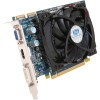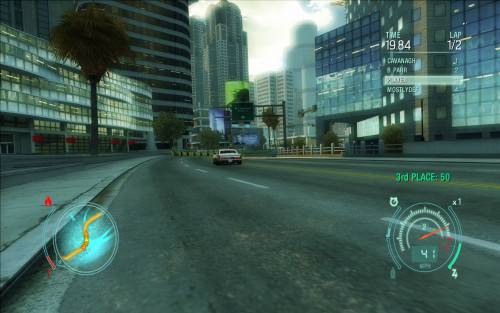- Qualcomm Launches Snapdragon 4 Gen 2 Mobile Platform
- AMD Launches Ryzen PRO 7000 Series Mobile & Desktop Platform
- Intel Launches Sleek Single-Slot Arc Pro A60 Workstation Graphics Card
- NVIDIA Announces Latest Ada Lovelace Additions: GeForce RTX 4060 Ti & RTX 4060
- Maxon Redshift With AMD Radeon GPU Rendering Support Now Available
Sapphire Radeon HD 4670 GDDR4 & HD 4830

Gaming on a budget isn’t as difficult as it once was, thanks to superb offerings from both ATI and NVIDIA that go for a modest price. But, what about the sub-$100 crowd? We’ll find that out here, at least from the ATI side of things, with Sapphire’s HD 4670 GDDR4 and HD 4830. Both feature great efficiency, and believe it or not, great overclocking as well.
Page 8 – Need for Speed: Undercover
The Need for Speed series is one that remains close to my heart, as I’ve been played through each title since the release of the second title. Although the series has taken some strange turns most recently, the series still manages to deliver a great arcade-like experience that can be enjoyed by NFS die-hards and casual gamers alike. Sadly, more serious racing fans have had to look elsewhere lately, so hopefully the next NFS incarnation will finally perfect what fans are really looking for.
While ProStreet diverted from the usual “open-world” design, Undercover returned to it. Also returning are police cars, a favorite of most fans. I’m a firm believer that most NFS titles should include police chases, and for the most part, they’re executed well in Undercover. There’s not too much that exists in this world that proves more frustrating than running over a spike strip after a clean 30-minute run, though.
For all of our tests, the graphics settings available are maxed out to their highest ability, with 4xAA being our chosen Anti-Aliasing setting.



In this game, the HD 4830 performed quite well throughout all three of our resolutions, but the HD 4670 was a tad lacking. Even though the HD 4670 scored the same FPS at 1920×1200 as the HD 4830 did at 2560×1600, the former “lagged” (more appropriately, stuck) throughout some of the gameplay, making it unplayable for the most part. This sticking wasn’t so pronounced that you couldn’t play the game like that, but it’s far from a great gameplay experience. Disabling AA fixed everything there, though.
As mentioned in previous GPU reviews, certain games don’t run at all at 2560×1600 on our Gateway XHD3000H with NVIDIA-based GPUs, hence the absolute lack of results from the green team in that graph. I recently received a driver that fixed the issue, however, and once it’s verified stable, I’ll go ahead and put their cards through this title in order to fill out that particular graph.
Because of the lack of 2560 results for NVIDIA, a “best playable” table really wasn’t necessary, however in the case of these two cards, both were deemed fully playable with anti-aliasing disabled at 2560×1600. The HD 4830 finished that run with an average of 45.493 FPS, while the HD 4670 finished with 29.852 FPS.
Support our efforts! With ad revenue at an all-time low for written websites, we're relying more than ever on reader support to help us continue putting so much effort into this type of content. You can support us by becoming a Patron, or by using our Amazon shopping affiliate links listed through our articles. Thanks for your support!






